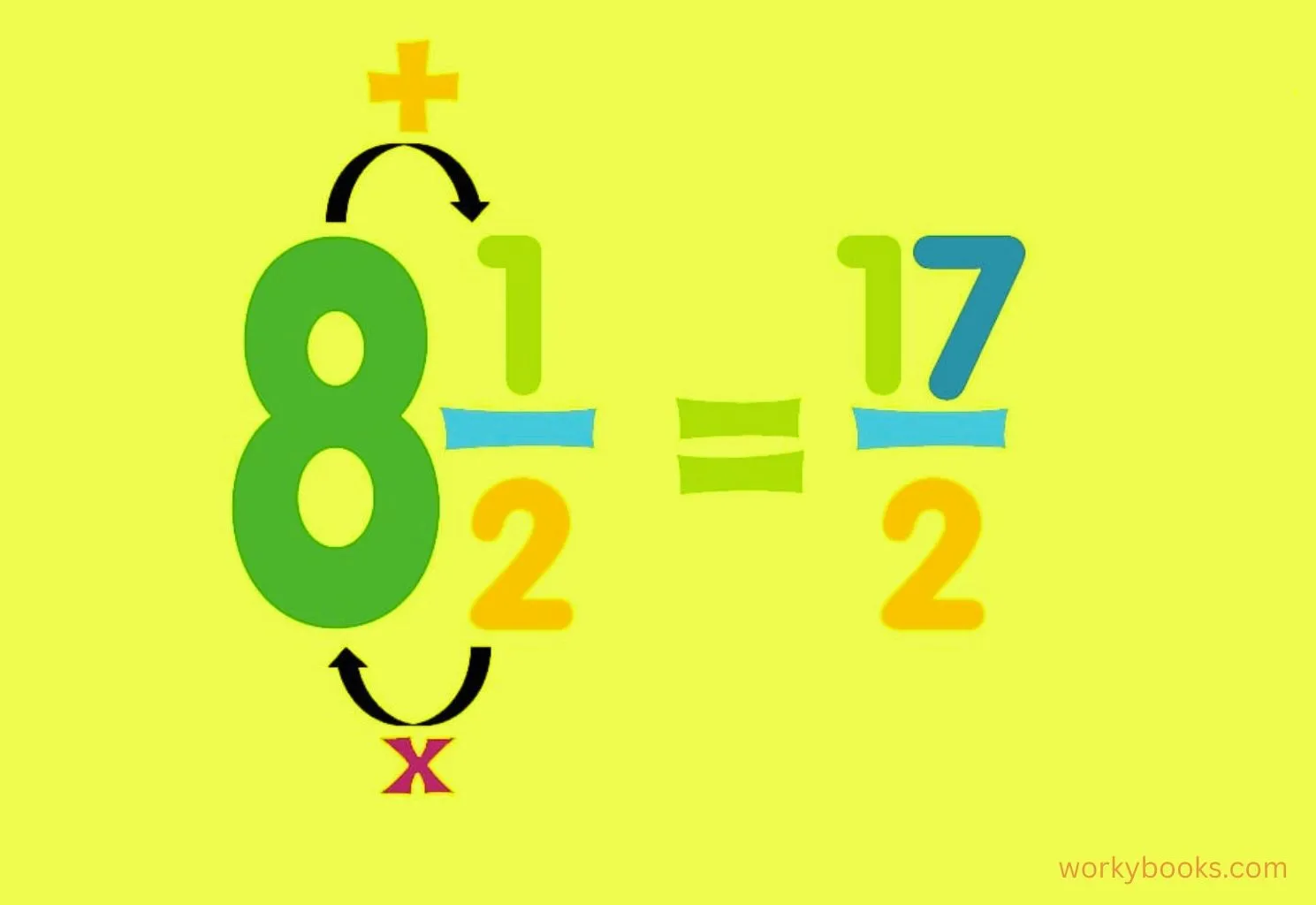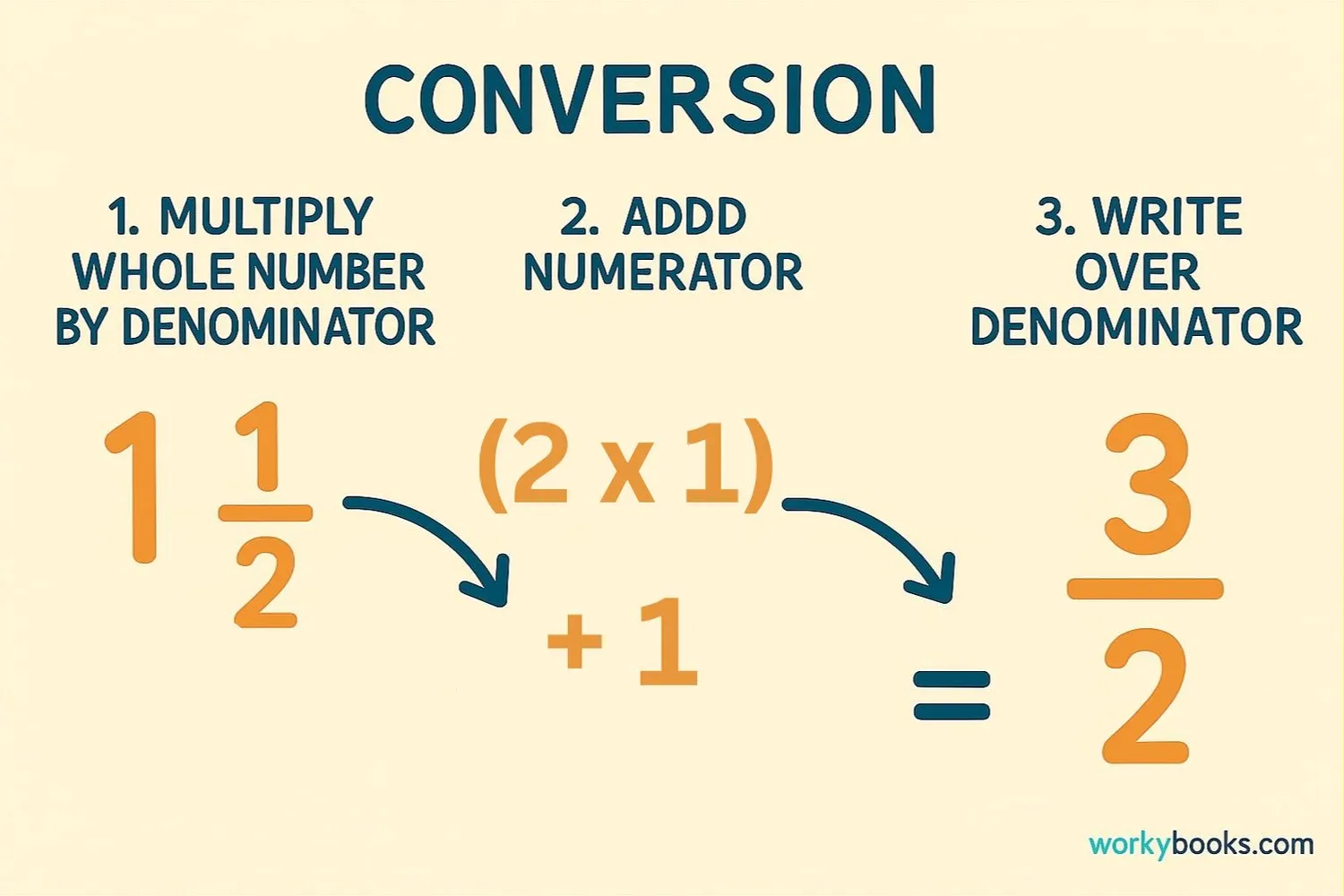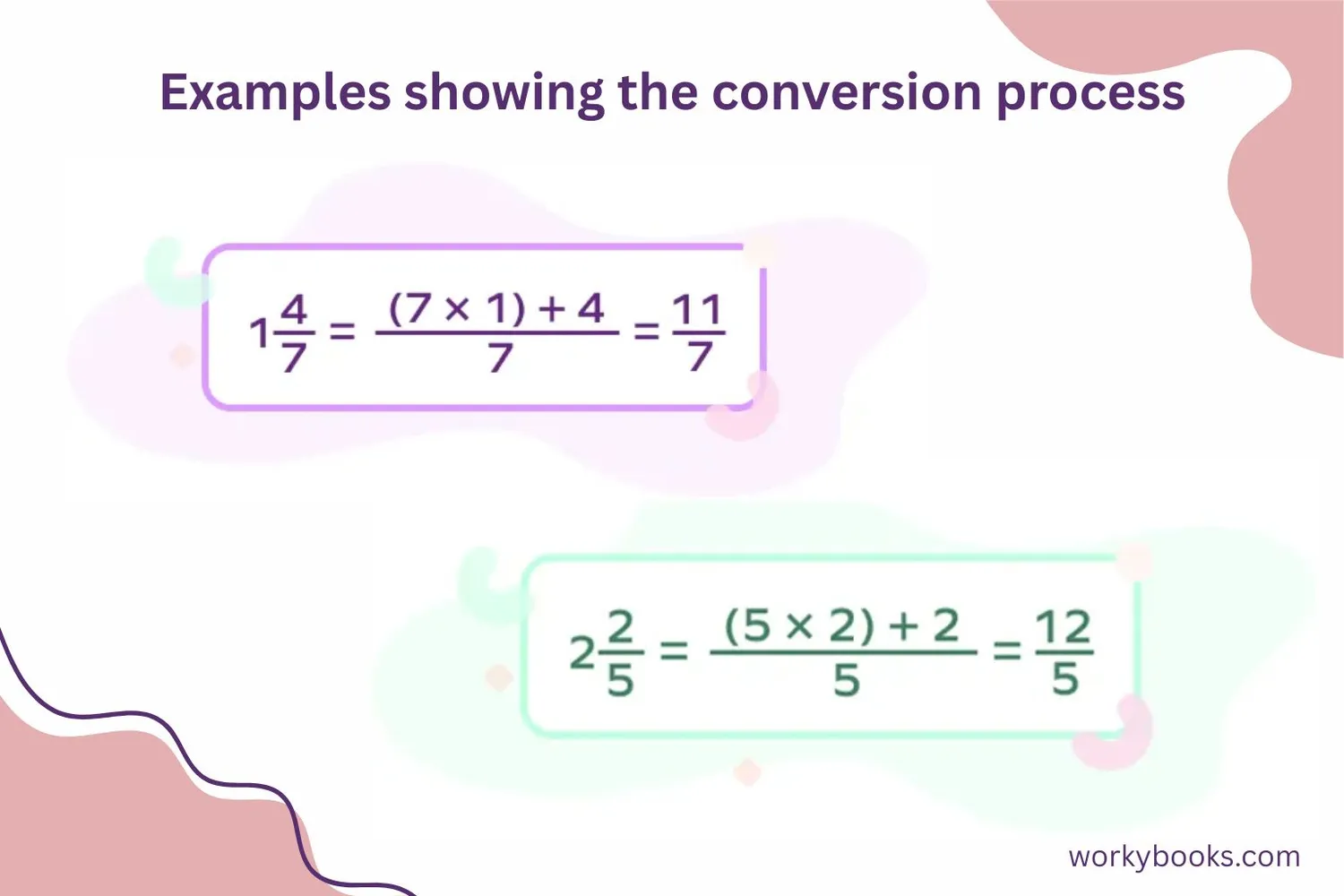Mixed Numbers to Improper Fractions - Definition, Examples, Quiz, FAQ, Trivia
Learn to convert between mixed numbers and improper fractions with easy explanations and practice activities
What are Mixed Numbers and Improper Fractions?

A mixed number is a combination of a whole number and a proper fraction. For example,
234 is a mixed number.
It means 2 whole units plus 3/4 of another unit.
An improper fraction is a fraction where the numerator (top number) is equal to or greater than the denominator (bottom number).
For example, 114 is an improper fraction.
Mixed numbers and improper fractions both represent the same value, just in different forms. We often convert between them to make calculations easier.
Key Concept
Mixed numbers combine whole numbers with fractions. Improper fractions have numerators larger than denominators.
How to Convert Mixed Numbers to Improper Fractions

Converting mixed numbers to improper fractions follows a simple 3-step process:
Conversion Formula
To convert any mixed number to an improper fraction, use this formula.
Remember
The denominator stays the same during conversion. Only the numerator changes.
Step-by-Step Examples

Let's practice conversion with some examples:
Example 1: Convert 234 to an improper fraction
Answer: 234 = 114
Example 2: Convert 312 to an improper fraction
Answer: 312 = 72
Example 3: Convert 523 to an improper fraction
Answer: 523 = 173
Conversion Tip
Always double-check your work by converting the improper fraction back to a mixed number to ensure you get the original value.
Conversion Practice Quiz
Test your conversion skills with this 5-question quiz. Choose the correct answer for each question.
Frequently Asked Questions
Here are answers to common questions about mixed numbers and improper fractions:
Fraction Trivia
Discover interesting facts about fractions:
Ancient Fractions
The ancient Egyptians used fractions as early as 1800 BC. They primarily used unit fractions (fractions with 1 as the numerator) and would express other fractions as sums of unit fractions.
Fraction Line
The horizontal line between the numerator and denominator was introduced by Arabic mathematicians. Before that, fractions were written without this line, making them harder to read.
Word Origin
The word "fraction" comes from the Latin word "fractus" which means "broken." This makes sense because fractions represent parts of a whole - or broken pieces.
Fractions in Music
Fractions are used in music to represent note values. A whole note can be divided into half notes, quarter notes, eighth notes, and so on, just like fractions.





